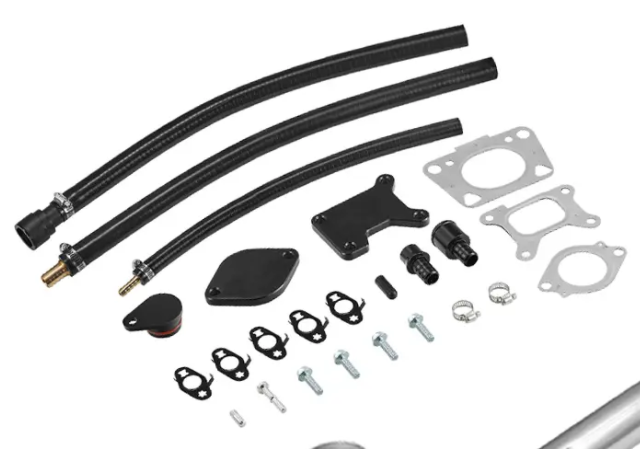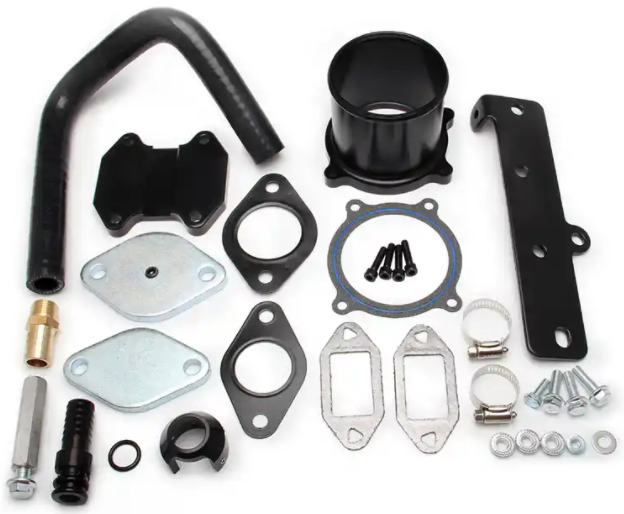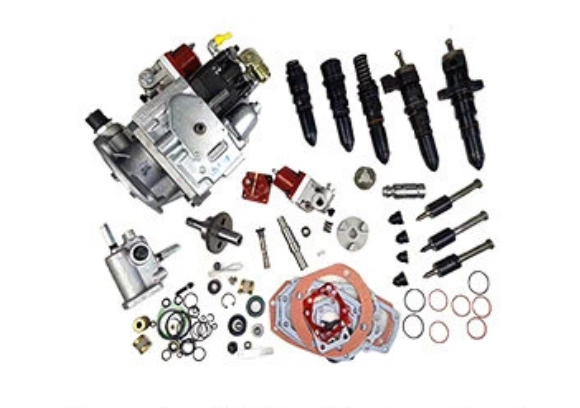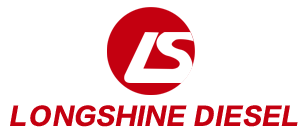What is the Best Delete Kit for 6.7 Cummins?
The 6.7L Cummins diesel engine is widely renowned for its incorporation into the RAM 2500 & 3500 and various Chevrolet and GMC one-ton and medium-duty trucks. It is popular among its users owing to its incredible power, durability, and reliable performance. In addition to its many advantages, the engine possesses many features to meet strict emission regulation compliance; these features include EGR, DPF, and DEF.
Exhaust emissions reduction is a positive step towards improving air quality. However, the emission control systems can cause performance loss, carbon deposits, and clogging as a result of prolonged use. That is why many truck owners start asking, what is the best delete kit for 6.7 Cummins? Seeking solutions that can restore performance and improve engine efficiency.
Part 1. What is a Delete Kit? Why Do Some Owners Prefer It?
A delete kit is a type of aftermarket modification designed for engine emission control systems (i.e., EGR, DPF, and DEF/SCR). The main purpose of a delete kit is to remove, bypass, or disable the systems, thereby modifying how the engine manages emissions and performance.
Delete kits come in many different forms, and the most common forms include:
- EGR Delete Kit
- DPF Delete Kit
- DEF / SCR Delete Kit
- Full Delete Kit
- Electronic Simulators/Emulators

Why Would Owners Choose a Delete Kit?
Additional Horsepower and Torque: Increased power during certain driving conditions is possible due to optimised combustion (by means of tuning). Backpressure in the exhaust system is reduced which enhances combustion and exhaust efficiency.
Improved Fuel Economy (in some situations): Proper tuning after deletes can lead to better mileage for heavy-load or long-haul driving although in most situations, over-aggressive tuning counteracts this.
Reduced DPF/EGR Failures and Maintenance Costs: Owners who suffer excessive downtime due to excessive carbon deposits, or repeated regeneration failure in which carbon deposits are cleared, may opt for deletes in order to reduce maintenance time and expenses.
Avoiding DEF Refills and Sensor Faults: Where good quality DEF fluid is difficult to find or system faults are frequent, disabling the DEF system is seen as reducing operational downtime.
Off-Road/Non-Road Use or Racing: For race tracks, show vehicles, or equipment that only runs on private property, some owners aim for maximum performance by removing emissions systems (purely for non-road use).
Part 2. Common Types of 6.7L Cummins Delete Kits
Delete kits are one of the popular aftermarket solutions for 6.7L Cummins diesel engine owners, designed to bypass, disable, or remove emission control systems. Every kit is focused on specific components and offers certain benefits, as well as some points to consider:
1. EGR Delete Kit
The EGR Delete Kit removes or disables the EGR system, which would otherwise route exhaust gases back into the intake manifold. This reduces carbon deposits, sludge, and excessive intake system heat.
Benefits:
- Simplifies engine maintenance by reducing intake manifold deposits.
- Improves low-end torque, idle quality, and low-RPM throttle response.
- Can extend engine life by eliminating wear caused by carbon buildup.
Considerations: EGR deletes require proper tuning or ECU modification to avoid error codes and ensure stable running.
2. DPF Delete Kit
The DPF (Diesel Particulate Filter) Delete Kit removes the particulate filter and often replaces it with a straight-through or high-flow exhaust system. The modification removes backpressure and issues related to failed DPF regenerations.
Benefits:
- Enhances engine performance and responsiveness, especially under heavy load or towing conditions.
- Minimizes maintenance and operational downtime from clogged DPFs.
- May remove recurring check engine lights or regeneration cycles.
Considerations: DPF removal significantly increases particulate emissions, and the vehicle is no longer emissions compliant for use on public roads.
3. DEF / SCR Delete Kit
Disables the Diesel Exhaust Fluid (DEF) system and Selective Catalytic Reduction (SCR) unit that reduce nitrogen oxide emissions.
Benefits:
- Eliminates DEF refills and prevents sensor-related problems.
- Reduces downtime caused by DEF system failure or low-quality DEF fluid.
Considerations: Like other deletes, this modification is legal for off-road or private use only.

4. Full Delete Kit (EGR + DPF + DEF)
The Full Delete Kit removes all of the major emission control systems—EGR, DPF, and DEF—along with ECU tuning for optimal engine performance and driveability.
Benefits:
- Offers the most horsepower and torque gain.
- Deletes emission system maintenance issues altogether.
- Recommended for off-road, racing, or heavy-duty use.
Considerations: Requires professional installation and ECU calibration. For off-road use only, as it is illegal for public road use in most locations.
5. Electronic Simulators / Emulators
These devices mimic the emission systems’ signals to the ECU, causing it to “believe” that the components are still present and functioning, avoiding fault codes and warning lights.
Benefits:
- Can be used in conjunction with physical delete kits for error-free ECU functionality.
- Preserves drivability if sensors or components are removed.
Considerations: Improper installation can cause engine error or performance issues. Does not physically remove emissions components, does not reduce emissions output.
These well-liked delete kit options give 6.7L Cummins owners different alternatives depending on their goals, whether for performance, reduction of maintenance, or off-road application, while also emphasizing proper installation, tuning, and adherence to legal limitations.
Part 3. Challenges and Risks of Delete Kit Usage
As much as a delete kit may seem like the key to solving some performance or maintenance issues, it is not without significant issues and risks:
1. Legal Compliance
It is illegal in most locations, including the United States, Canada, and the European Union, to install a delete kit on a road-legal vehicle. The law explicitly prohibits the tampering of emission control systems, and violators may be fined heavily, fail inspection, or even have their vehicles impounded.
Delete kits are strictly for off-road use, racing tracks, or private property only, and owners are tasked with ensuring that the vehicle is never driven on public highways in such a setup.

2. Engine Reliability and Stability
Removing emission systems alters how the engine manages airflow, exhaust backpressure, and combustion. If not properly addressed with an ECU recalibration, this can lead to a range of issues, including:
- Check engine lights and fault codes
- Poor drivability at certain RPMs or loads
- Increased engine stress or potential for component wear
Proper tuning or remapping is required to maintain engine stability and prevent long-term damage.
3. Resale and Warranty Impact
A delete kit installation can nullify the factory warranty, leaving owners solely responsible for drivetrain or engine repairs. Vehicles with deleted emissions systems can also lose value on the resale market since potential buyers and dealerships avoid non-compliant modified vehicles. This renders legal and fair sale pricing of the vehicle difficult.
4. Environmental and Social Considerations
Not necessarily the prime concern of owners, but worth noting nonetheless, is that deleting emissions controls increases the amount of pollutants such as nitrogen oxides (NOx) and particulate matter that harm air pollution and public health.
Part 4. Smart Alternative to Delete Kits: Premium Cummins Parts
Most owners of 6.7L Cummins engines fitting a delete kit cite EGR valve, DPF, or DPF sensor reliability problems as their primary motivation. These problems, however, can almost always be resolved by using Cummins genuine parts or good quality aftermarket components without the legal and environmental consequences associated with delete kits.
Key Strategies for Maintaining Cummins Performance
Replacement of the EGR Valve
A properly working EGR valve maintains efficient combustion and lowers the carbon buildup in the intake system. Regular replacement with a good quality valve ensures consistent engine performance, idle smoothness, and decent fuel efficiency, minimizing the problems that lead owners to consider EGR delete.
Upgrading Air and Oil Filtration
High-performance air filters and engine oil filters prevent contaminates from entering the engine and exhaust systems. Cleaner oil and air reduce wear, reduce the likelihood of soot deposits, and improve overall combustion efficiency. In doing this, engine responsiveness and engine life are maintained.
Replacing DPF Pressure Sensors on a Regular Basis
The DPF pressure sensors track exhaust flow and assist the system in managing the regeneration cycle. Faulty and worn out sensors start warning lights and/or cause malfunctioning regeneration. Quality replacement DPF sensors prevents the DPF from clogging or needing maintenance in the future.
Choosing Reliable Fuel Injectors and Turbochargers
Quality turbochargers and injectors have a direct effect on fuel economy and engine performance. Well-maintained and reliable components allow the engine to produce maximum horsepower and torque without removing the emission system.

Benefits of Using Premium Cummins Parts
Compliance with the Law: All part replacements and services, as opposed to delete kits, are totally legal for on-road use.
Long-Term Reliability: Quality components and regular maintenance extend the life of the engine and reduce downtime.
Sustainable Performance Gains: Owners can achieve the same degree of throttle response, torque, and fuel efficiency gains delete kits provide but in a safer and more responsible manner.
Less Overall Risk: Eliminates the risk of engine issues, check engine lights, or voided warranties.
With a combination of high-quality Cummins parts and regular maintenance, owners can provide engine longevity, boost performance, and stay compliant without the drawbacks of delete kits.
Final Thoughts
From a performance standpoint, a delete kit can indeed provide higher power output and improved drivability. However, the legal risks and long-term consequences cannot be ignored. For 6.7 Cummins owners looking to enhance engine performance, legal modifications and high-quality parts are the smarter choice.
Whether you are a fleet operator, repair shop, or individual owner, it’s essential to ensure your vehicle remains compliant with regulations. Combine professional advice with the right upgrades to choose the most suitable solution.
If you are looking to purchase genuine Cummins parts, Longshine is a trusted Cummins supplier known for reliable, high-quality Cummins parts and engine.
FAQs
Is it worth deleting a 6.7 Cummins?
While removing the engine from a 6.7 Cummins unit can legally, environmentally as well as warranty wise pose some considerable risks, the advantages do seem alluring.
For most owners, a much safer and sustainable alternative lies in using high quality replacement parts and servicing the unit regularly, as there is no need to breach emissions regulation in the process.
How do I choose the right delete kit?
When shopping for a delete kit, examine your usage (off-road or on-road), what components it deletes (EGR, DPF, DEF), and if it involves proper ECU tuning or electronic simulators.
Purchase only from well-known vendors and have installation done professionally. Keep in mind that most kits’ street use is unlawful.
Which years to avoid 6.7 Cummins?
Some years of the 6.7 Cummins are more likely to have EGR or DPF issues. If you’re wondering what year 6.7 Cummins to avoid, in general, 2013–2015 early EcoDiesel models and 2019–2020 trucks with newer emissions equipment have been more problematic. It’s wise to research specific engine codes and read owner forums before buying.
How long will a deleted 6.7 Cummins last?
A properly maintained 6.7 Cummins delete kit can easily last 300,000+ miles, although longevity does depend heavily on install quality, ECU tuning, and overall maintenance.
Without being properly maintained, deletes will cause premature wear on parts or result in engine failure. OEM or quality parts tend to have a more predictable lifespan.
